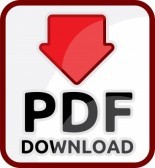А. Ya. Voronin
V.V. Dokuchaev Soil Science Institute, 109117 Moscow, Pyzhevskii 7, bld.2
The valuable criteria for identification of the soil profile form and its functional properties were determined by interpretation of radarograms obtained in the course of georadiolocated profiling of different territories using the geophysical device “Loza-B”. Apart from a standard set of methods for digital processing of radarograms and constructing a temporary profile of changes in the reflected impulse amplitude along the direction of its sounding and transformation with depth it is suggested to use the information on changing the dynamic characteristics of the wave field in homogenous media. It involves the data about splash of the wave field, determination of diffraction points corresponded to horizons and objects, calculation of the frequency characteristics for distribution of reflected signals in the soil profile. The periodical sequence of picks within the amplitude spectrum is characteristic of the simple homogenous layer. Changes in the thickness of the soil horizon are studied by amplitude maximum of reflected impulses in the radarogram. The procedure of soil verification based upon the comparison of real soil profiles with standard within the framework of a definite classifier is conducted by statistic methods for calculating the polynomial functions of trend values of the signal amplitude according to its duration. The statistical processing includes calculation of mean values, standard deviations and the distribution frequency of signal amplitude connected with the layer width and the amount of signal oscillations. The indices of spectral Furie transformation (frequency, period, spectral density) along with trend characteristics of polynomial modulations are considered as the major criteria for the two-staged identification of soils. In spite of attractive pattern of Furie spectral transformation the calculation of trend models and testing the results should be testified by data obtained for soil profiles in field.
Keywords: amplitude of reflected impulse, georadar, identification, soil, radarogram, spectral density, trend.
REFERENCES
1. Belobrov V.P., Aidiev A.Ya., Voronin A.Ya., Kulenkamp A.Yu. Otsenkaneodnorodnostipochvennogopokrovapripolevomopytepominimi-zatsiiobrabotok, Agri-environmental problems of soil science and agriculture is, Leah, Kursk, 2013, pp. 14–18.
2. Vladov M.L., Starovoitov A.V. Interpretatsiyadannykhgeoradiolo- katsionnykhnablyudenii, Exploration and protection of mineral resources, 2001, No.3, pp.11–14.
3. Voronin A.Ya., Pyagai E.T., Belobrov V.P., AidievA.Ya., Kulenkamp A.Yu. Georadarnyimetodizucheniyapochvennogopokrova (na primere tipich- nykhchernozemov), Agri-environmental problems of soil science and agricul- ture, Kursk, 2013, pp.33–38.
4. Denisov R.R., Kapustin V.V. Obrabotkageoradarnykhdannykh v avto- maticheskomrezhime, Geophysics, 2010, No.4, pp.76–80.
5. Dmitriev E.A., Samsonova V.P., Rozhkov V.A. Ob ispol'zovaniiteoriislu- chainykhfunktsiipriizucheniipochvennogopokrova, Vestnik Mosk. Univ. Ser. Biology, Soil Science, 1974, No.3, pp.43–53.
6. Zolotaya L.A., Kalishcheva M.V., KhmelevskoiV.K. Vozmozhnostigeofi- zicheskikhmetodovpriizucheniisostava i strukturypochvennogopokrova, Exploration and protection of mineral resources, 2004, No. 5, pp. 47–50.
7. Kalinkevich A.A., Krylova M.S., Masyuk V.M, Marchuk V.N. Ispol'zovaniegeoradaradlyaissledovaniyaneodnorodnosteiverkhnegosloya-pochvykhvoinogolesa, Radioengineering, 2009, No. 3.
8. Kalinkevich A.A., Kutuza B.G., Krylova M.S. i dr. Ob opyteispol'zo-vani-yageoradarnykhdannykhdlyainterpretatsiiRLI, poluchaemykh s po-moshch'yuIMARK, Tr. 2nd Intern. Conf. "Akustooptichekie and radio-locating methods of measurement and processing of information." Suzdal', 2007, pp.9–16.
9. Classification and diagnostics of soils of the USSR, Moscow, 1977, 223 p.
10. Kopeikin, V.V. The propagation of electromagnetic pulses in the subterres-trial environment, (http://www.geo-radar.ru/articles/articles.php), 2012.
11. Lyubushkin A.A. Geophysical data analysis systems and ecological-ray monitoring, Moscow, 2007, 228 p.
12. Guidelines on the use of ground penetrating radar at obsl-ment of road constructions. The Ministry of Transport of the Russian Federation, Moscow, 2003.
13. Subsurface sensing using geophysical comple “LOZA”, “LOZA-M” (poiskprotyazhennykhpodzemnykhsooruzhe-nii) (metodicheskierek-omendatsii), Moscow, 2012, 16 p.
14. Pyagai E.T., Belobrov V.P., Molchanov E.N., SeoMungChul, Son Ion Kui. Ispol'zovaniegeoradara v pochvennykhissledovaniyakh, ByulletenPochvennogoinstitutaim. V.V. Dokuchaeva,2009, Vol. 64, pp. Vyp. 64, pp.34–40.
15. Pyagai E.T., Il'inL. I., Morozov P.A. Monitoring and forecast agroeko logical state lands, Moscow, 2013, 297 p.
16. Reznikov A.E., Kopeikin V.V., Morozov P.A., Shchekotov A.Yu. Razrabotkaapparatury, metodovobrabotkidannykhdlyaelektromagnitnogo pod-poverkhnostnogozondirovaniya i opytikhprimeneniya, Successes INDIVIDUALS-ray science, 2000, No 5, pp.565-568
17. Starovoitov A.V. The interpretation of GPR data, Moscow, 2008, 192 p.
18. Yankovskii K.P. Otsenkadiagnosticheskikhvozmozhnosteisistemgeora-dar-nogozondirovaniyaprirodnykh i prirodno-antropogennykhob"ektov. Avtoref.… dis. kand. tech.nauk, Moscow, 2005.
19. Fisher M. Ground-penetrating radar used to uncover misteries beneath our feet, Soil Horizons, 2013, Vol. 54, No. 6, P. 54.
